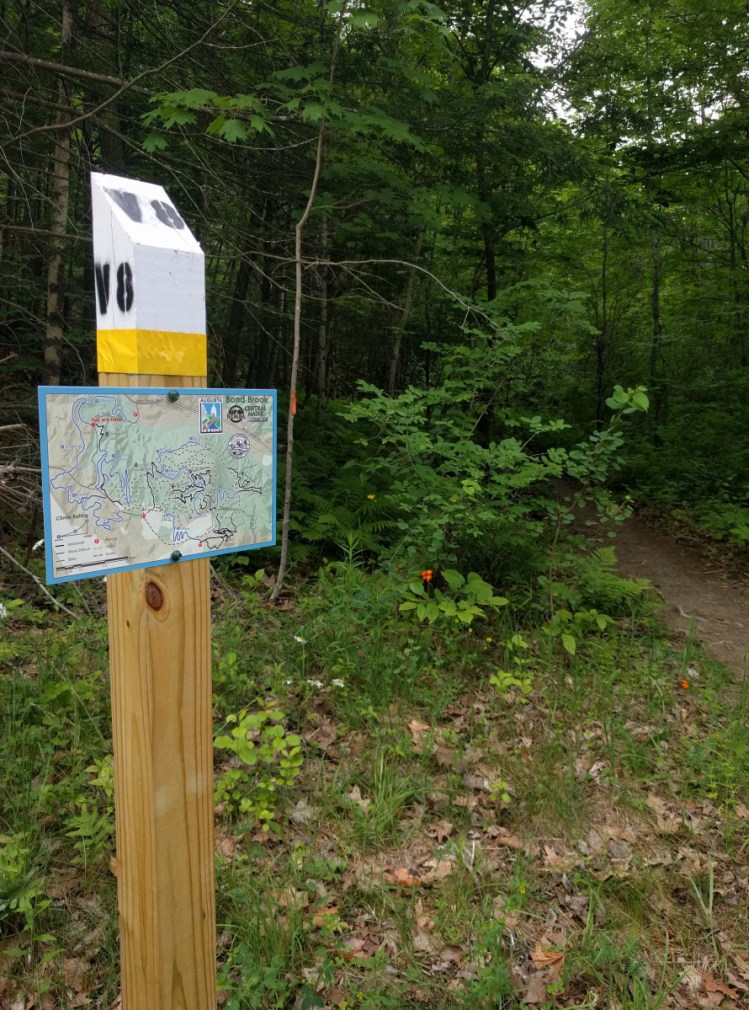Growing up less than a half-hour from our state’s capital, I’ve long had an affection for Augusta. My father, John, had a business in the city for a number of years when I was growing up, and we frequently visited his office – along with the Maine State Museum and Library, the State Capitol Building, and downtown Augusta and Hallowell. Not only that, but I often thought of Augusta as the gateway to Maine’s western mountains and wilderness. After all, after leaving the midcoast we passed through the city before suburban development gave way to trees on the way to Sunday River, Sugarloaf, The Forks or Moosehead Lake.
Until recently I thought of Augusta as only a signpost on the way to those other outdoor destinations, not a place for recreation in and of itself. With a moniker like Disgusta (lobbed at our opponents during high school matches with Cony), how could the capital have outdoors worth exploring?
Luckily a number of area nonprofits, including Augusta Trails and the Augusta Nature Club, have stepped up to preserve natural public spaces and develop trails in Maine’s capital.
In my exploration of Augusta’s trails, the biggest network seems to be the Bond Brook Recreation Area. Owned by the city of Augusta and largely developed by Augusta Trails, the BBRA is a 270-acre “urban wilderness area” with 6 miles of trail for single-track mountain biking, hiking and snowshoeing, and an additional 5 miles for Nordic skiing. The trails span the space between the Augusta State Airport and Route 27, with parking available at Mount Hope Cemetery, at Tall Pines Way off Route 27, and at a lot in the center of the BBRA.
The trails offer plenty of pleasant hiking over rolling hills and through softwood forest, though they seem best suited for mountain biking. The Facebook page for Augusta Trails is regularly updated with information about both trail conditions and scheduled competitions (trail running and mountain biking).
Just across Bond Brook Road from the BBRA, the University of Maine at Augusta maintains more than two miles of trails adjacent to campus. The trails are flat and unchallenging, but offer a pleasant stroll (or run) through forest in the heart of Augusta. Most interestingly, the trails are also home to a number of “fitness stops” – monkey bars, pull-up bars and wooden platforms for push-ups – that encourage working out parts of the body beyond the legs. I’ve never seen anything quite like that before on a trail in Maine, and it offers a unique opportunity for a full-body workout in the outdoors instead of in a gymnasium. Parking for the UMA trails is available at the campus.
Situated to the west of Cony High, the Augusta Nature Education Center is home to a five-mile network of trails. The two-mile “Red Line” trail circles the perimeter of the Center and is a packed-gravel trail that should be easily navigable by most visitors. The trail crosses Whitney Brook twice, and winds past a few ponds by Cony and an amphibian pond near Route 105. The trails that track through the center of the 175-acre ANEC offer views of granite quarries, a handful of waterfalls and active beaver ponds. Access to the trail is a breeze, with no less than 13 access points along the Red Line. There’s on-street parking at access points on Route 105 and the Cony Road Extension, and parking lots at Cony High and Hodgkins Middle School.
The Augusta Nature Education Center has a history that tracks back to 1919. At the time a group of area birders started a birding club, and over the next decade their focus shifted from birding to a general interest in nature and preservation. In the 20s the group named itself the Augusta Nature Club, and soon after began exploring the idea of a permanent nature sanctuary. In the early 70s, the club established the Augusta Nature Education Center.
Perhaps the longest and most scenic hike in the Augusta area – as well as the most easily accessible – is the Kennebec River Rail Trail. One of the many great examples in Maine of former rail bed being converted into a hiking and biking (and wheelchair-accessible) trail, the KRRT runs from just south of Water Street in Augusta to downtown Gardiner. Hugging the western banks of the Kennebec River, the trail runs just over six miles through Augusta, Hallowell, Farmingdale and Gardiner. Parking is available on either end, at the Hannaford parking lot in Gardiner or the Maine State Housing Authority parking lot off Water Street in Augusta.
The route cycles between developed downtowns and quiet woods, and the mix of rural, natural and urban space provides some nice variety. Downtown Hallowell, near the halfway point, offers a nice spot to stop for a coffee or a beer. The rail trail is part of the larger East Coast Greenway, which can take users all the way down the eastern seaboard to Florida on a mix of dedicated trails and public roads.
Josh Christie is a freelance writer living in Portland. Along with his brother, Jake, he writes about great Maine destinations for outdoors enthusiasts. Josh can be reached at::
joshua.j.christie@gmail.com
Send questions/comments to the editors.



Comments are no longer available on this story